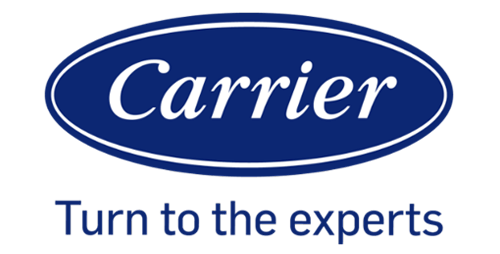Understanding When Your Furnace Needs Replacement in Chicago Heights
In Chicago Heights, where winter temperatures regularly plunge below freezing and heating systems work overtime from November through March, recognizing when your furnace requires replacement rather than repair becomes crucial for maintaining home comfort and safety. At JTR Heating and Air Conditioning Inc., we’ve served this community since our founding in 1984, and we understand the unique challenges that Illinois winters pose to heating systems. Your furnace typically communicates its declining health through various warning signs that homeowners should never ignore.
When furnaces approach the 15 to 20 year mark, they often begin showing their age through decreased efficiency, unusual noises, and inconsistent heating patterns throughout your home. If you notice cold spots in certain rooms while others remain warm, or if your energy bills have steadily increased despite similar usage patterns, these symptoms indicate your system struggles to distribute heat effectively. Additionally, frequent repairs that exceed $500 annually often signal that replacement makes more financial sense than continuing to patch an aging system.
The Complete Furnace Replacement Process
Our furnace replacement process at JTR Heating and Air Conditioning Inc. begins with a comprehensive home assessment that examines far more than just your existing equipment. We evaluate your home’s insulation levels, window efficiency, ductwork condition, and overall square footage to calculate the precise heating load requirements for your Chicago Heights property. This detailed analysis ensures your new furnace neither underperforms during brutal cold snaps nor wastes energy by being oversized for your actual needs.
Following the assessment, we present multiple furnace options tailored to your specific requirements and budget constraints. Modern furnaces range from 80% AFUE standard efficiency models to 98% AFUE high-efficiency units, with each percentage point translating to real savings on your monthly heating bills. We explain the differences between single-stage, two-stage, and modulating furnaces, helping you understand how each technology impacts both comfort levels and operating costs. The actual installation typically requires one to two days, during which our certified technicians remove your old equipment, modify any necessary ductwork connections, install the new furnace according to manufacturer specifications, and thoroughly test the system to ensure optimal performance.
Energy Efficiency Standards and Cost Savings
The Department of Energy’s current minimum efficiency standard for new gas furnaces in northern climates stands at 90% AFUE, but many Chicago Heights homeowners choose models exceeding 95% efficiency to maximize long-term savings. When replacing an older 65% efficient furnace with a modern 95% AFUE model, typical households save between $300 and $500 annually on heating costs, with exact savings depending on home size and insulation quality.
Understanding efficiency ratings helps make informed decisions about your investment. AFUE (Annual Fuel Utilization Efficiency) measures how much fuel converts to usable heat, meaning a 95% AFUE furnace transforms 95 cents of every dollar spent on natural gas into home heating, with only 5 cents lost through exhaust. High-efficiency furnaces achieve these impressive ratings through advanced features like secondary heat exchangers that capture additional warmth from exhaust gases before they exit your home. Variable-speed blowers further enhance efficiency by adjusting airflow based on heating demands, eliminating the energy waste associated with traditional on-off cycling.
Selecting the Right Furnace Size and Type
Proper furnace sizing remains one of the most critical factors in achieving optimal comfort and efficiency in your Chicago Heights home. An undersized unit runs continuously during cold weather without adequately heating your space, while an oversized furnace cycles on and off frequently, creating temperature swings and increased wear on components. Our load calculations consider factors including:
- Home square footage and ceiling heights: Larger spaces and cathedral ceilings require additional heating capacity
- Insulation levels in walls and attics: Better insulation reduces the required furnace size
- Window quantity and quality: Single-pane windows lose significantly more heat than modern double or triple-pane options
- Air infiltration rates: Older homes often have more air leaks requiring compensation through heating capacity
Beyond sizing, choosing between furnace types involves considering your comfort preferences and budget. Single-stage furnaces operate at full capacity whenever running, making them the most affordable option but potentially less comfortable due to temperature fluctuations. Two-stage models offer high and low settings, providing better temperature consistency and quieter operation during mild weather. Modulating furnaces represent the premium option, continuously adjusting their output between 40% and 100% capacity to maintain precise temperature control while maximizing efficiency.
Installation Best Practices and Safety Considerations
Professional installation ensures your new furnace operates safely and efficiently throughout its expected 15 to 20 year lifespan. Our installation process at JTR Heating and Air Conditioning Inc. follows strict industry standards and local Chicago Heights building codes, beginning with proper permits and concluding with thorough system commissioning. We verify gas line sizing meets your new furnace’s requirements, as high-efficiency models often need larger gas supplies than older units they replace.
Venting represents another crucial safety consideration, particularly with high-efficiency furnaces that produce acidic condensate requiring special drainage provisions. These units typically vent through PVC pipes rather than traditional metal chimneys, necessitating careful planning to ensure proper slope and drainage. We also install new thermostats compatible with your furnace’s features, often recommending programmable or smart models that optimize comfort while reducing energy consumption through automated temperature scheduling.
Maintenance Requirements and Warranty Protection
Your new furnace investment deserves protection through proper maintenance and warranty coverage. Most manufacturers offer parts warranties ranging from 10 years on standard models to lifetime coverage on premium units, but these warranties typically require annual professional maintenance to remain valid. As a family-owned and operated HVAC company, we understand the importance of protecting your investment and offer comprehensive maintenance plans tailored to your equipment’s specific requirements.
Regular maintenance tasks that extend furnace lifespan and maintain efficiency include:
- Annual heat exchanger inspections: Detecting cracks early prevents dangerous carbon monoxide leaks
- Burner cleaning and adjustment: Ensures complete combustion and optimal efficiency
- Blower motor lubrication: Reduces friction and prevents premature motor failure
- Safety control testing: Verifies all limits and switches function properly
- Air filter replacement: Maintains proper airflow and indoor air quality
Emergency Replacement Services and Financing Options
Furnace failures rarely occur at convenient times, which explains why we provide 24/7 emergency service throughout Chicago Heights and surrounding communities. When your heating system fails during a January cold snap, waiting until regular business hours isn’t an option. Our emergency response team quickly assesses whether temporary repairs can restore heat or if immediate replacement becomes necessary for your family’s safety and comfort.
Understanding that furnace replacement represents a significant investment, we offer flexible financing options to help manage this unexpected expense. Many homeowners qualify for 0% interest financing over 12 to 18 months, while longer-term options provide manageable monthly payments that often cost less than continuing repair expenses on failing equipment. Additionally, various utility rebates and tax incentives may offset replacement costs, particularly when upgrading to high-efficiency models that reduce overall energy consumption.
Your furnace replacement decision impacts your home’s comfort, safety, and energy costs for decades. By choosing JTR Heating and Air Conditioning Inc. for your Chicago Heights furnace replacement needs, you partner with experienced professionals who prioritize proper sizing, quality installation, and long-term satisfaction over quick sales. Contact us to schedule your comprehensive home heating assessment and discover how modern furnace technology can transform your winter comfort while reducing monthly operating costs.




